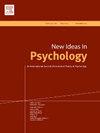戏剧面具的面部感知和同步中断
IF 2.9
3区 心理学
Q2 PSYCHOLOGY, EXPERIMENTAL
引用次数: 0
摘要
本文研究了支撑戏剧面具使用的一些心理和感知基础,提出它们的部分力量源于两种相互交织的进化适应:大脑中的面部处理结构和我们对社会同步的自然倾向。我们关注戏剧教育家Jacques Lecoq(1921-1999)使用的两种特定类型的戏剧面具:幼虫面具和半面具。以这些为例,我们认为戏剧面具通过无缝地参与负责快速面部检测和情感推断的神经网络,利用了我们对面部的微调敏感性。此外,面具干扰了我们的社会同步能力,这鼓励表演者扩大他们的具体表达范围。这有可能显著提高受训演员的“表演工具包”。对于观众来说,面具通过模糊面部细节和制造认知歧义来破坏同步性,使观众的解释过程复杂化,从而增强参与度和审美体验。本文章由计算机程序翻译,如有差异,请以英文原文为准。
Face perception and synchrony disruption in theatre masks
This paper examines some of the psychological and perceptual foundations that underpin the use of theatre masks, proposing that part of their power stems from two intertwined evolutionary adaptations: face processing architecture in the brain and our natural tendency toward social synchrony.
We focus on two specific types of theatre masks used by theatre pedagogue Jacques Lecoq (1921–1999): larval masks and half-masks. Using these as examples, we argue that theatre masks leverage our finely-tuned sensitivity to faces by seamlessly engaging the neural networks responsible for rapid face detection and emotional inference. Furthermore, the masks interfere with our ability for social synchronisation, which encourage performers to broaden their range of embodied expression. This has the potential to significantly boost the ‘performative toolkit’ of actors-in-training. For the audience, the masks disrupt synchrony by obscuring facial details and creating cognitive ambiguities, complicating the audience's interpretative process and thereby enhancing engagement and the aesthetic experience.
求助全文
通过发布文献求助,成功后即可免费获取论文全文。
去求助
来源期刊

New Ideas in Psychology
Multiple-
CiteScore
4.80
自引率
3.80%
发文量
37
期刊介绍:
New Ideas in Psychology is a journal for theoretical psychology in its broadest sense. We are looking for new and seminal ideas, from within Psychology and from other fields that have something to bring to Psychology. We welcome presentations and criticisms of theory, of background metaphysics, and of fundamental issues of method, both empirical and conceptual. We put special emphasis on the need for informed discussion of psychological theories to be interdisciplinary. Empirical papers are accepted at New Ideas in Psychology, but only as long as they focus on conceptual issues and are theoretically creative. We are also open to comments or debate, interviews, and book reviews.
 求助内容:
求助内容: 应助结果提醒方式:
应助结果提醒方式:


